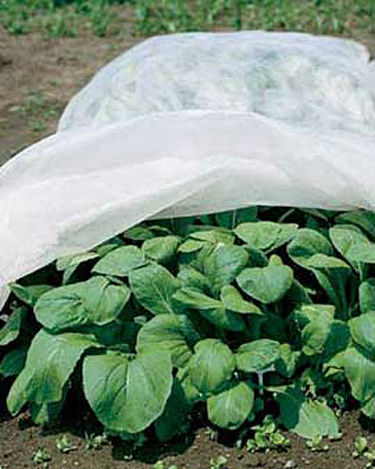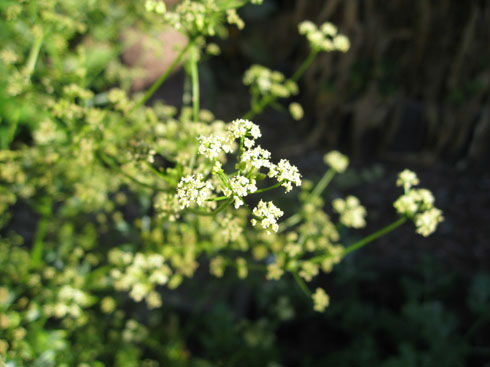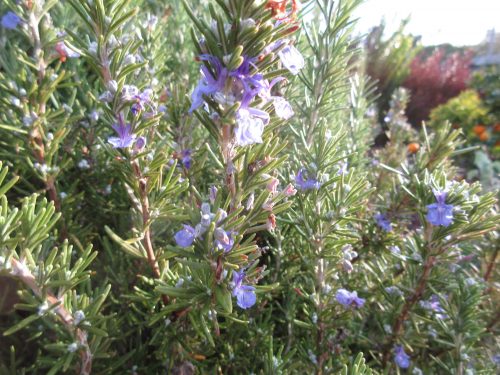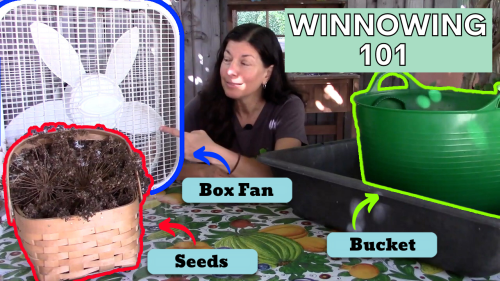A great question came in this week:
“Hi, I started a 8×10 garden in my backyard full of veggies and herbs
this past summer, yet everything has died except for a few herbs
because I did nothing when it froze here in Dallas…What should I have
done if anything to have saved it and how can I start growing things
now and what is best to plant. Thanx from newbie gardener….”
You’re not alone this winter. In fact, unless you live in Zones 9 & 10 (with the exception of poor Miami, Florida this year) gardeners probably experience a freeze most winters that puts the garden to rest. There are definitely things that you can do to prolong your growing season and protect your garden from certain death:

1) Floating Row Cover – this garden fabric is available in different weights or levels of insulation. You can cover your crops with this cloth before it gets cold to extend plant life into, and sometimes through, winter. Most fabrics allow water to flow through, so you don’t have to remove it to water. Some fabrics can be laid right on top of your crops, while others are best suited when used with hoops. Click the link above for a fabric that is good down to 28 degrees, or check out Agribon, a commercial brand that is a little more heavy-duty: Agribon Floating Row Cover.
2) Cold Frames – these are basically raised beds with glass on top that can be placed over your crops to insulate them and allow the radiant heat from the sun to warm whatever is inside the box. You can build them yourself or purchase them from places like Gardener’s Supply. If you have old windows lying around, they’re perfect for this purpose. You can also build cold frames with bales of straw or hay, which provide excellent insulation. Here are some more traditional cold frames from GrowOrganic.com:
Amazon’s take on the cold frame offers protection against frost and gives you an early start in spring.
As for what to grow now:
If you have space to start seeds indoors, you can get going on your spring crops early. Here is a helpful chart from the Farmer’s Almanac with start times for seeds both indoors and directly seeded in the garden in Dallas:
| Crop | Start Seeds Indoors | Moon-favorable Dates | Start Seeds in the Ground | Moon-favorable Dates |
|---|---|---|---|---|
| Beans | Mar 3-17 | Mar 15-17 | ||
| Beets | Feb 10-Mar 24 | Feb 10-12 | ||
| Broccoli | Jan 6-20 | Jan 15-20 | Feb 10-17 | Feb 13-17 |
| Brussels sprouts | Jan 6-20 | Jan 15-20 | ||
| Cabbage | Jan 6-20 | Jan 15-20 | Feb 24-Mar 10 | Feb 24-28 |
| Carrots | Jan 27-Feb 10 | Jan 31-Feb 10 | ||
| Cauliflower | Jan 6-20 | Jan 15-20 | Feb 24-Mar 10 | Feb 24-28 |
| Celery | Jan 6-20 | Jan 15-20 | ||
| Corn | Mar 17-24 | Mar 17-24 | ||
| Cucumbers | Feb 3-17 | Feb 13-17 | Mar 10-17 | Mar 15-17 |
| Lettuce | Jan 20-Feb 3 | Jan 20-30 | Feb 24-Mar 17 | Feb 24-28 |
| Melons | Feb 3-17 | Feb 13-17 | Mar 17-24 | Mar 17-24 |
| Onion sets | Feb 3-10 | Feb 3-10 | ||
| Parsnips | Feb 10-Mar 3 | Feb 10-12 | ||
| Peas | Jan 20-Feb 3 | Jan 20-30 | ||
| Peppers | Jan 6-20 | Jan 15-20 | ||
| Potato tubers | Mar 3-17 | Mar 3-14 | ||
| Pumpkins | Feb 3-17 | Feb 13-17 | Mar 10-17 | Mar 15-17 |
| Radishes | Feb 24-Mar 10 | Mar 1-10 | ||
| Spinach | Jan 20-Feb 3 | Jan 20-30 | ||
| Squash, summer | Feb 3-17 | Feb 13-17 | Mar 10-17 | Mar 15-17 |
| Squash, winter | Feb 3-17 | Feb 13-17 | Mar 10-17 | Mar 15-17 |
| Tomatoes | Jan 6-20 | Jan 15-20 |
I hope this helps. Thanks for writing in!



